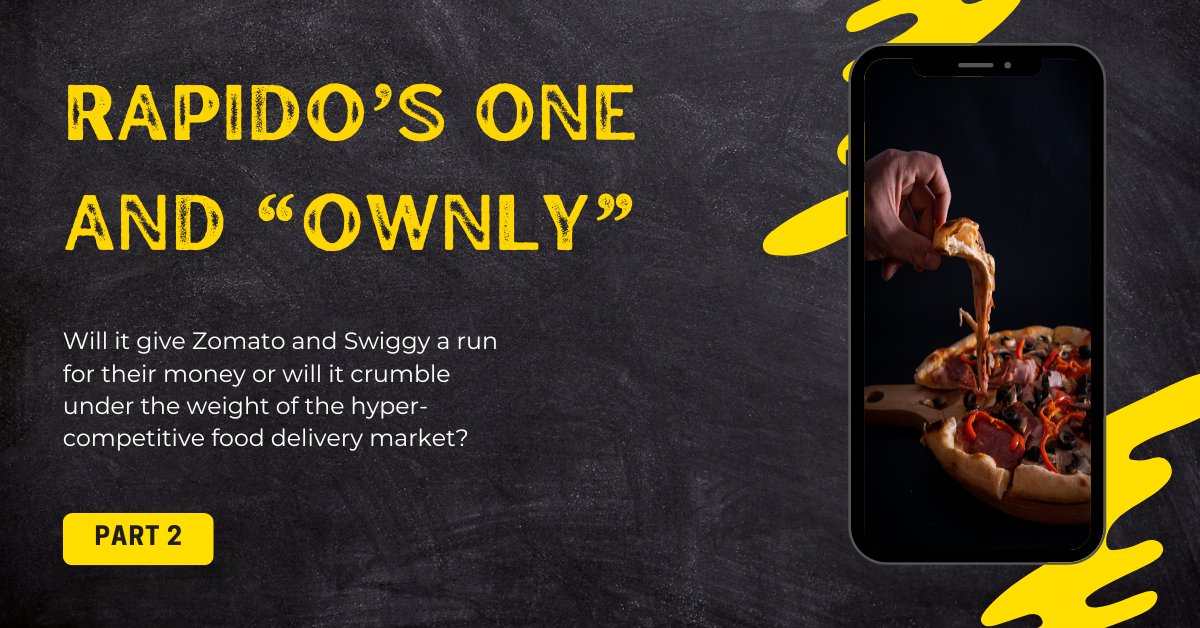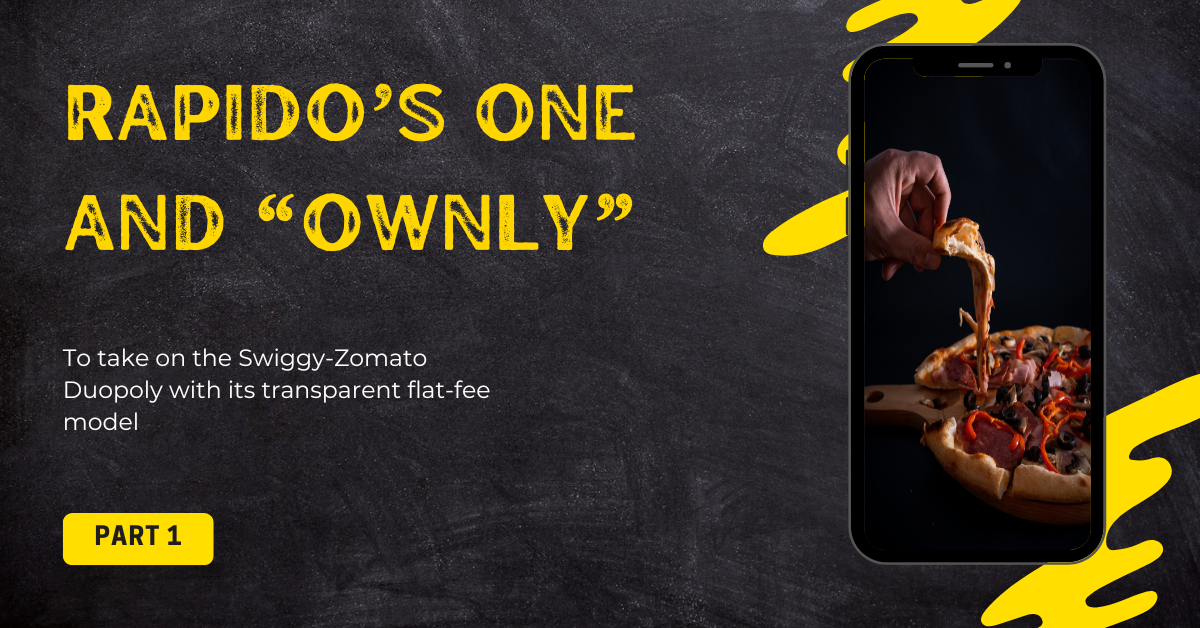Hello, I'm
Vatsal Jain
A freelance content writer on a mission to make you seen, heard, and known with sharp, on-brand content
-

- 900+Blogs
Published - 20+Worldwide
Clients



How Can I Help You With?
For me, good writing isn’t a “one size fits all” recipe. It’s carefully tailor-made for your brand.
Blog / Articles
Engaging articles and blog posts that’ll address your customers’ most critical questions and pain points while positioning your brand as an expert in the industry.
Press Releases
Market Previews
Product Descriptions
Compelling copy that walks through your product’s value and benefits, converting browsers into buyers
Web Page Content
Social Media Posts

Who am I
Freelance Content Writer from India
Running short of creative juices while crafting killer content for your website? Or not having enough hours in the day to create one?
Don’t sweat. I got this!
I’m Vatsal Jain (you can call me Vats), and I save you time, money, and headaches.
My writing has served as a lead generation tool for various companies – whether you’re just taking off or dealing in millions.
When your brain is bombarded with loads of ideas, I sift and carve them into content valuable and powerful enough to turn your readers into customers/clients you’ve been dreaming of.
I write content that’s grin-worthy and fresh from the oven your visitors haven’t seen before. In fact, they’ll stay glued to your website for long, even if a juicy message or notification pops up.
While “tech’ has been my jam, as technology touches every aspect of our lives, I’m a lifelong learner who thrives on variety. This curiosity has led me to write about BFSI, business, retail, and healthcare.
Thanks to my ruthless eye for detail, I guarantee you website words that’ll amaze your readers and make them feel like they’ve learned something (if not everything).
So, let me worry about the content, and you can stay relaxed and have a blissful sleep.
P.S.: When I’m not occupied with a project, I go out for a walk, do household chores, and spend time with my parents. The simple things in life are the best ones.

Get Better Content. No Monkey Business. No Bullshit.
Think You Can Handle This On Your Own?
Think Again!
Without a Professional Writer
With a Professional Writer
- Low-quality content, filled with errors.
- Wasted lots of time writing and editing.
- Dull writing that sounds robotic and boring.
- Content that doesn’t rank well on SERPs.
- Low-quality content, filled with errors.
- Wasted lots of time writing and editing.
- Dull writing that sounds robotic and boring.
- Content that doesn’t rank well on SERPs.
With a Professional Writer
- Flawless, top-tier content for your brand.
- Free up your valuable time on core business tasks
- Catchy content that grabs eyeballs
- Content that’s favored by Google algos
So, Why Me?
Want Content That Doesn’t Suck? Sign Me Up!
Latest Reads


Can Rapido’s Ownly Handle The Zomato-Swiggy Storm? [Part 2]
Rapido has already hogged the news headlines with its food delivery venture, “Ownly,” aiming to challenge the Zomato-Swiggy duopoly.
With a pilot launching in Bengaluru soon, Rapido’s Ownly is luring in restaurants and consumers with two key value propositions: a flat-fee structure and transparent meal pricing.
This hints at a potential shake-up. But is it a walk in the park or a walk into the storm? Why has no other player been able to pull this venture off successfully yet?
In this article, I’ve answered these questions by explaining what’s driving Rapido Ownly’s proposed model and what roadblocks it can stumble upon.
Read the analysis!
Firstly, Why Earlier Ride-Hailing Biz Failed?
Before Rapido, Ola and Uber attempted to shake the Swiggy-Zomato duopoly with Ola Café (acquired Foodpanda India later) and Uber Eats India, respectively. Additionally, Amazon Food and the government-backed Open Network for Digital Commerce (ONDC) faced the same fate.
Ola Café, Amazon Food, and Uber Eats India fizzled out within a few years, with Zomato buying out the latter.
Most of these haven’t been able to grow due to limited restaurant selection, inefficient last-mile logistics, bad customer experience, and operational complexities.
While Ola has partnered with ONDC—its food delivery service “Ola Dash” now runs on the ONDC platform—it’s yet to match the success of Zomato and Swiggy.
The Rapido Advantage
Restaurant-Friendly Three-Tier Pricing Structure
Rapido has categorized its delivery fees into three distinct layers:
- Order value over ₹400: Flat delivery fee of ₹59 (₹50 + 18% GST) to be paid by partner restaurants.
- Order value ₹100-400: Flat delivery fee of ₹29.50 (₹25 + 18% GST) to be paid by partner restaurants.
- Order value below ₹100: Cross-subsidizing—partner restaurants will pay ₹11.80 (₹10 + 18% GST), customers will pay ₹23.60 (₹20 + 18% GST).
Now, let’s compare this flat-fee model to Zomato-Swiggy’s commission-based one.
Firstly, these two incumbents charge customers an additional platform fee of ₹10/order, which, with GST, totals ₹11.80.
Then, they extract 16-30% take rates of the order value. For example, a ₹500 food order on Swiggy or Zomato may attract ₹80-150 from partner restaurants. Rapido’s delivery fee will stay at ₹59.
The difference narrows on a ₹300 food order, with Zomato- or Swiggy-partnered restaurateurs footing ₹48-90. Rapido will charge ₹29.50 for the same order value.
Strong Last-Mile Delivery Backbone
Rapido boasts a ~40-lakh rider network (captains) that completes 6 crore monthly rides and over 30 lakh daily rides—a major credit goes to the two-wheelers (2W).
The ride-hailing unicorn plans to smartly redirect idle rider time to food delivery without fresh capital expenditure (CapEx). Moreover, the existing logistics infrastructure can speed up rollouts in new pin codes and potentially reduce delivery times in jam-packed urban areas.
As a sweetener, Rapido can expand its restaurant pool by targeting lower AOV eateries in tier 2 and 3 cities. These restaurants haven’t been profitable for Swiggy and Zomato.
Furthermore, Rapido’s previous experience with ONDC in food delivery works in its favor. Riders’ income will likely shoot as order volume increases. A dedicated captain’s app will loop ride, parcel, and food delivery orders into a single platform, with intelligent algorithms assigning jobs to maximize earnings and minimize travel distance.
The Cross-Sell Edge
Thanks to its massive ride-hailing user base, Rapido doesn’t need to splurge cash on bringing in new users to its food delivery app, Ownly. Instead, it can cross-sell to its existing customers by promoting Ownly within its own framework—in-app banners, SMS, and emails. Moreover, people with positive ride experiences will more likely give Ownly a test drive.
This means minimal-to-zero burning of millions on ads, influencer marketing, or discount wars to lure first-timers.
The result? Lower customer acquisition cost (CAC) and higher customer lifetime value (CLV).
But There’s A Flip Side To That Coin
Pricing Edge Wanes For Sub-100 INR Orders
When it comes to the delivery fee, Rapido trumps Zomato and Swiggy for food orders totaling at least ₹100. But for orders under ₹100, let’s say ₹70, Rapido loses its edge to the established players.
Let’s see how.
- Rapido: Combined fee of ₹35.40
- Zomato & Swiggy: ₹11-21 commission
At the lowest order tiers, the incumbents come out as the winners.
Signing Up Lakhs of Restaurants is a Steep Trek
Food delivery is operationally challenging, with only 10% of India’s gross order value (GOV) coming from organized quick-service restaurants (QSR) and the remaining from smaller eateries. So, Rapido Ownly must onboard thousands of mom-and-pop restaurants to scale up.
That’s an operational and logistical nightmare in a fragmented market.
Plus, on the supply side, Zomato and Swiggy have a firmer grip than their challengers. As of Q4 FY25, the Deepinder Goyal-led food delivery platform hosted about 314,000 monthly restaurant partners, followed by Swiggy’s 252,000.
This gives the two giants a clear edge in terms of scale and reach. For a newcomer like Rapido Ownly, inking deals with about 3 lakh restaurants to build supply is an enormous hurdle to jump over.
Shallow Profit Margins
In India, the AOV is ₹350–500, attracting ₹50–70 pre-order delivery costs. Rapido’s proposed take rates would hurt its profitability and, consequently, leave zero scope for further expansion and operational expenses (OpEx).
Rapido is still in the red and burns $4-5 Mn cash every month. So, potential low margins and bleak reinvestments in operations and expansions threaten an increased cash burn as it ventures into online food delivery.
Zomato, for instance, has priced meals 30-35% higher than dine-in rates on average. This makes its total customer costs, including delivery and platform charges, among the highest across continents.
Still, Zomato doesn’t enjoy the gravy train. It earns a flat 4.4% EBITDA, showing how thin profit margins already are, even at scale.
Therefore, Rapido Ownly will feel the pressure to increase take rates from partner restaurants, which can dilute its initial advantage.
Keeping Customers Happy Won’t Be That Easy
Zomato and Swiggy are doubling down on superfast food delivery with platforms, Bolt and Quick, respectively, to bring down delivery time to below 30 minutes. Both the giants are aiming for even faster food delivery.
Rapido’s riders will have to serve two high-priority demand segments—passengers and consumers—if it sticks to using its existing fleet. The mobility company needs to carve out a dedicated rider fleet to soak up the high-pressure, sub-30-minute food delivery. Else, the food might reach customers late due to rider allocation complexities, thus frustrating them.
So, while ₹25-50 per food order sounds great for restaurateurs, will customers switch for (slightly) affordable meals if delivery isn’t that fast?
Furthermore, Swiggy and Zomato have earned loyal customers through discounts, loyalty programs, and their respective quick-commerce services like Instamart and Blinkit. Rapido Ownly’s “earned visibility” model, where restaurant ratings precede paid ads, may not compete against incumbents’ aggressive marketing.
Zomato-Swiggy Won’t Just Sit and Watch
Zomato and Swiggy have already poured $2–3 Bn into building robust food delivery infrastructure. They now boast deep restaurant networks, strong and loyal customer bases, and a brand image that won’t fade anytime soon.
Sure, Rapido may onboard previously untapped restaurants, especially low AOV eateries in tier 2 and 3 cities, onto its platform. This will expand the overall food delivery market rather than poach the customer base of the incumbents.
Needless to say, Zomato and Swiggy will likely double down on what they do best: faster deliveries, hyperlocal dominance, and deeper discounts.
Is Rapido Biting More Than It Can Chew?
Rapido has entered the food delivery fight club at a time when restaurant owners are fed up with the unsustainable cost structure of Zomato and Swiggy. Ownly’s arrival has spiced up the competition and may compel market heavyweights to rethink their pricing models.
That said, real disruption will require more than low commissions and fleet reallocation.
Until then, Zomato and Swiggy’s structural advantages—dense restaurant networks, loyal customer bases, and operational muscle—remain intact.
It’s a hyper-competitive platform economy and India’s food delivery industry has been unforgiving.
Will Rapido trigger material shifts in the market share or is it just an exaggeration?
Only time will tell.

Rapido Ownly: Grabbing A Bite Out of the Zomato-Swiggy Duopoly [Part 1]
“Every person should have the luxury of choice and the ability to order a reasonably priced meal.”
This is Rapido’s tagline-cum-mission as it plans to burst into the food delivery scene with “Ownly.”
With a soft launch on cards in Bengaluru in late June-early July, the ride-hailing platform is looking to shake the duopoly that Zomato and Swiggy have long enjoyed.
Rapido has joined forces with the National Restaurant Association of India (NRAI), which represents over 500,000 restaurants nationwide.
Both parties have been brainstorming with each other for the last 6 months to build the right commercial and logistic structures for partner restaurateurs and food delivery.
So, what’s so big deal about it?
Small Restaurateurs, Big Problems with Zomato and Swiggy
Zomato and Swiggy’s commission-heavy model often works against small-to-medium restaurant owners. As they handle a lower order volume than larger outlets, the high platform commissions eat into their already-thin margins.
On the flip side, large restaurant chains have greater negotiating power given their high order volumes, enabling them to negotiate sweeter deals. As such, the playing field becomes uneven where the smaller guys have to either comply or risk invisibility.
In a LinkedIn post, Vandit Malik, founder of the Garlic Bread, explained how Zomato is eating into small biz’s profits due to costly ads.

Few Challengers Entered The Kitchen….And Got Burned
Rapido isn’t the first to challenge the Swiggy-Zomato duopoly. Various ride-hailing giants have tried their best to breach India’s food delivery wall, all of which have had to retreat.
- Ola launched Ola Cafe in 2015, and later on acquired Foodpanda India in 2017. Despite heavy investment and efforts, Ola’s venture fizzled out. By 2019, it was all curtains for the ride-hailing service in the space due to operational inefficiencies and stiff competition.
- Uber launched Uber Eats India in 2017 but had to shut down its operations three years later, selling the business to Zomato in January 2020.
Rapido’s New Recipe for Food Delivery
Rapido has proposed two game-changing moves to disrupt India’s ~$55 Bn online food delivery market:
Flat Fees, Lower Commission
Rapido has introduced a three-tier pricing model. It’ll charge a fixed delivery fee of ₹50 on orders above ₹400 and ₹25 on orders totaling ₹100-400. That said, both restaurant owners and consumers will share the burden for food orders below ₹100 (cross-subsidizing). Rapido will deduct these charges from the order value. All these within a standard 4-km radius and exclusive of the GST (18%).
That means restaurants need to pay an 8-15% commission based on the average order value (AOV), a 50% slash from what Swiggy and Zomato charge from their partner restaurants: 16-30%.
Rapido’s lower commissions are appealing to small-to-mid-sized eateries that often run on large low-ticket order volumes, are price sensitive, and hence, grapple with high aggregator fees.
Online Price=Offline Price
Rapido Ownly has urged partner restaurants to price the meals on its platform the same as in dine-ins. The ride-hailing unicorn has claimed that online food delivery is expensive and the trend will only go north. Hence, most Indian consumers get shooed away.
“We will only be looking to work with partners who can commit to this stand of honest pricing.”
Said Rapido in its proposal.
So, it’s in talks with restaurateurs to list at least four dishes below ₹150 each to attract new users and make food more affordable for the existing ones. Plus, these food items will be shown more prominently to customers.
This is particularly a welcome move for the vast, price-conscious people in tier-2 and tier-3 cities, where online food delivery penetration is showing promising signs.
Besides, the affordability means restaurateurs no longer need to rely on discounts and offers to improve their visibility. All thanks to Rapido’s no-discount platform that’s planting the spotlight firmly back on product and price. Simply put, the meals will be front and center on Rapido’s food delivery app, alongside the entire menu.
How Much Your Meal Will Likely Cost on Rapido Ownly Then?
You won’t have to pay platform or packaging fees, except for a small delivery fee for orders below ₹100. And of course, the 18% GST.
So, here’s how Rapido Ownly’s move can impact your final bill:

A meal that costs ₹199 will cost ₹199 on the menu, whether online or offline (plus GST). Only ordering via the former will attract delivery fees. No platform markups, packaging, and other hidden fees (dark patterns).
But, How Will Rapido Make Profits?
I know you must be thinking about this. Rapido has answered that question.
“We hope to bring delivery costs down across the industry… Once we have brought about real structural change in delivery prices, we will look to charge a flat subscription fee from restaurants. We will always remain zero commission.”
Unlike Zomato and Swiggy, which offer ad and marketing solutions for restaurants to boost reach, Rapido will equip its partner restaurants with the data and tools necessary to offer discounts to select customers. But it has asserted not to use discounting to push down prices on the app or compel restaurateurs to do so.
A Disruptor or A Has-Been?
While Rapido might rebrand its food delivery venture in the future, the company won’t budge on its mission of offering more affordable meals to customers. Its price structure rethinking is an open challenge to Swiggy and Zomato, who have irked small restaurants with their commission-based models.
Furthermore, Rapido’s equal focus on India’s price-conscious diners can just spice up a revolution, in times where people have to trade off convenience with premium charges.
Currently carrying passengers in 100 cities, Rapido aims to serve 500 cities across India by 2025.
Happy Clients, Happy Me!
"Don’t judge me based on my winners but on my losers—because I’ve so few.” Here’s what my clients have to say.
"Vatsal is exceptionally good at writing. He cares about writing and is committed to the quality of his work. He is reliable and thorough. He has helped me with really amazing pieces of content. I highly recommend Vatsal for any role that needs impressive writing skills. And he is such a courteous human and a pleasure to work with."
“When Vatsal started his journey, I played a role of his mentor. Vatsal is a prolific writer and a wonderful person inside out. The best gift a mentor can get is, to see their mentees becoming a leader and outgrowing. I take pride in saying that, Vatsal has innate abilities of weaving words and creating magic out of them. I wish him all the success in his future endeavors.”
Let’s Discuss Your Content Needs
Maybe you want your web content to be playful, authoritative, or thought-provoking. Maybe you need it to be crystal-clear, concise, and insightful. Well, that’s what I’m here for—to help you get your message across.

Address
Hit Me Up!



